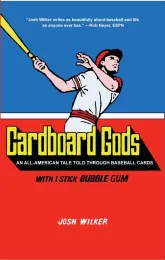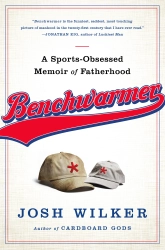(This post originally appeared on The Classical.)
Gaps
In 1980, when I was 12, I started noticing gaps. I’d drifted out of a trio I’d been a part of all through elementary school. Mike, Glenn, and I had played together all the time, goofed, made up games. We’d even co-written a sequel to Star Wars. (It was mostly light-saber fight scenes.) We’d loved school. Mike and Glenn continued to do so as we all moved on to the more regimented junior high. I reacted to the move onward and upward as I still react to all change, resisting it passively and self-destructively, as if it’s trying to erase me, and as if I could somehow protect something essential, some central glowing ember, by doing the erasing myself.
I can’t name this essential ember, if it even exists. I can only pull things toward where I think it might be. That summer after seventh grade, I collected baseball cards solo for the first time, my older brother having moved on to other things. I guess the cards weren’t the same without him: it was my last year of collecting. Still, or maybe because of this, these 1980 cards stand out. A lot of posed shots, a lot of blue sky. As if someone kept saying, Hold it, stand still. One last time.
***
In 1981, the Oakland A’s completed a return from a post-dynastic plummet into oblivion, once again winning the A.L. West led by what was possibly the best defensive outfield in baseball history. I pulled that trio toward me, imagining all the things it had that I lacked: capability, power, togetherness, speed. The centerfielder playing right field, Tony Armas, was blessed with a lightning-bolt arm that he would pass down to his namesake, Tony Armas Jr., a major league pitcher, and the centerfielder playing left field, Rickey Henderson, was as fast as an Olympic sprinter. The best fielder of the three, the centerfielder among centerfielders, was Dwayne Murphy, who had a strong arm, blazing speed, and the decisiveness, tenacity, and vision of a battle-scarred field sergeant. In high school, he had been a great defensive back in football; he believed his mastery of skills for that position enabled him to play very shallow in centerfield and still be able to sprint back and cover the outer reaches of his terrain. The three A’s were perfectly suited as a trio, a six-armed, six-legged creature, all limbs in synch under the leadership of Murphy. Henderson was a left-handed thrower, putting his glove hand in place to guard liners down the left-field line; Armas was a righty, putting his glove hand in place to guard liners down the right-field line. In between stood Murphy. Anything hit in the voluminous zip code he commanded was subject to a miraculous reversal of Murphy’s Law. Whatever can be tracked down, will be.
My brother went away to boarding school that year, and I entered high school. I got farther and farther away from the action of life, like a centerfielder afraid the ball would be hit over his head. If I looked down I would have seen my heels on the warning track. This was no way to defend against the widening gaps, but I didn’t know what else to do but retreat.
I remember realizing sometime around then that the members of my own disbanded trio, Mike and Glenn, weren’t “cool,” that their continued enthusiasm for math and science and Star Trek and their unashamed friendly banter with teachers set them on the wrong side of what I sensed was a merciless culling in progress in the steely locker-lined halls. Perhaps to avoid sticking out like them, I started playing dead. For whatever reason, playing dead or other, I never studied and rarely paid attention, and I lost the thread in almost every class, instead leering at girls and daydreaming mushily about sports. I remember sitting in the back of a math class and watching Glenn, near the front, ham it up with the teacher and a suddenly deep-chested girl who also still liked school. I wasn’t part of any of it anymore. School became a place of tits and confusion.
***
A 1982 article in Sports Illustrated celebrated the greatness of the trio anchored by Dwayne Murphy. My brother’s subscription still brought the magazine to our house every week, even in his absence, his name in the address box on the cover. “The A’s have the best outfield I’ve ever seen,” Don Zimmer observed in the article. He wasn’t alone in this thought. And this valuation wasn’t one of those beliefs that in later years seems to have been a collective hallucination. The numbers back it up, or so it would seem. For three years in the early 1980s, the Dwayne Murphy trio covered the gaps as perhaps no other trio in baseball history has.
How can this be illustrated? I don’t know. WAR? Range Factor? Total Zone Runs? The A’s trio seems to have performed exceedingly well in all sorts of complex statistical metrics that are as lost to me as that math class. It’s a cruel twist of fate that the one thing clogging up my brain, the mountain of relatively simple baseball statistics I memorized as a child, has left no room for me to learn anything else, including the more recent and complicated ways of measuring performance on a baseball diamond. Conversations about baseball continue, but the conversations are laden with baffling terms and mathematic mazes, a language beyond me.
I blew off my homework every night that year, instead playing a lot of solitaire Strat-O-Matic with cards representing the 1981 season. I rolled three dice, looked for the result of the roll on a pitcher’s or a hitter’s card, cross-referenced it if necessary (along with the roll of a twenty-sided die) on a fielding chart, wrote down the outcome of the at-bat in pencil in a hand-drawn scorecard in a notebook, and rolled the dice again. Over the weeks and months I filled up a large carton with all the box scores. I needed to save them all, every last page. When Dave Righetti pitched a no-hitter in one game I tacked the box score to the wall. Something amazing had happened, it seemed, and I wanted it to last and to be known.
I loved playing Strat-O-Matic with the 1981 A’s. When the dice roll pointed toward a fielding chart for one of the three outfielders, there was a kind of certainty that was becoming rarer in my life. This ball is going to be caught. They were able to turn a major league outfield, that vast expanse, into something without gaps. Gaps kept opening wider everywhere. I disappeared into an imagining of wholeness.
***
In 1983, the A’s trio was broken up by the trade of Tony Armas to the Red Sox, where he would almost instantaneously become old and slow, as if proximity to Dwayne Murphy was some kind of cosmic battery charger. Henderson would also seem to change when he left Murphy’s side and joined the Yankees, blooming into a self-aggrandizing mercenary superstar eccentric. I would be changing soon, too, going away to boarding school, where I would add marijuana and alcohol to my modes of disappearance. Before that departure in the fall of 1983, I spent all summer in the backyard throwing a tennis ball off the ridged tin roof of our house.
With this repetitive physical ritual came an intricate internal ritual of imaginary self-abnegating mitosis. First, I split from myself into a player on offense and a player on defense. I’d give each player a name. The player on offense threw the ball at the roof, trying to hit one of the ridges so that the ball would fly off at an angle. The player on defense tried to catch the ball, making routine grabs when the ball missed a ridge, attempting running, tumbling grabs when the ball caught a ridge. I split again into a team of players on offense and a team of players on defense, all of them with names, and then split myself again into an entire league of teams, each with a roster of players with particular strengths and weaknesses, which I committed to memory and then tried to enact with my body, for example laming up my throws for a guy who was “all glove/no hit” and conversely imagining some extra lead in my ass for a slow-footed slugger as he attempted to track down a roof ricochet.
Every afternoon I was the invisible god for a new world, gone from myself. It would always come down to one last play. Often the intricate fantasy would end in an unsatisfying way, with a routine catch. But sometimes the crucial final play, with the title on the line, would require me to sprint full-tilt across the lawn and dive. Sometimes I couldn’t get there in time. Other times I’d just barely make the catch. That feeling, to be like Dwayne Murphy, was what I was aiming for. To be exhausted and completely gone, laid out in the grass and awash in glory, cheers raining down as if the silent mountains all around were packed stands, the feeling from making the spectacular catch one of impossible containment, as if the rule of the world—that gaps appear and expand—was somehow in this one moment of triumph reversed. That there were no gaps at all.







You must be logged in to post a comment.